AWS Route 53
Manges DNS names, Hosted Zones, Health checks, Registrations
DNS Basics
Domain registry, health check, DNS resolution
Located with edge locations
Hosted Zones
Hosted zone is collection of records
Private hosted zones: e.g. jbprivate.com
Record types
- A record (address record) translates hostname to IP
- AAAA record (address record) translates hostname to IP for ipv6
- SOA (Start of authority)
- Cname and Alias translate one domain name to another. Alias is an AWS thing.
For exam need alias, CNAME
- Cname
- maps one domain name to another.
- Can't create at top level (zone apex).
- can't point to AWS end point.
- paid lookup
- Alias
- similar to CNAME but records need to point to AWS services.
- Mean automatically pick up e.g. IP changes to S3 or cloudfront.
- can create alias at top level
- free lookup
TTL
Time to live. Caches come back and refresh record info after this time.
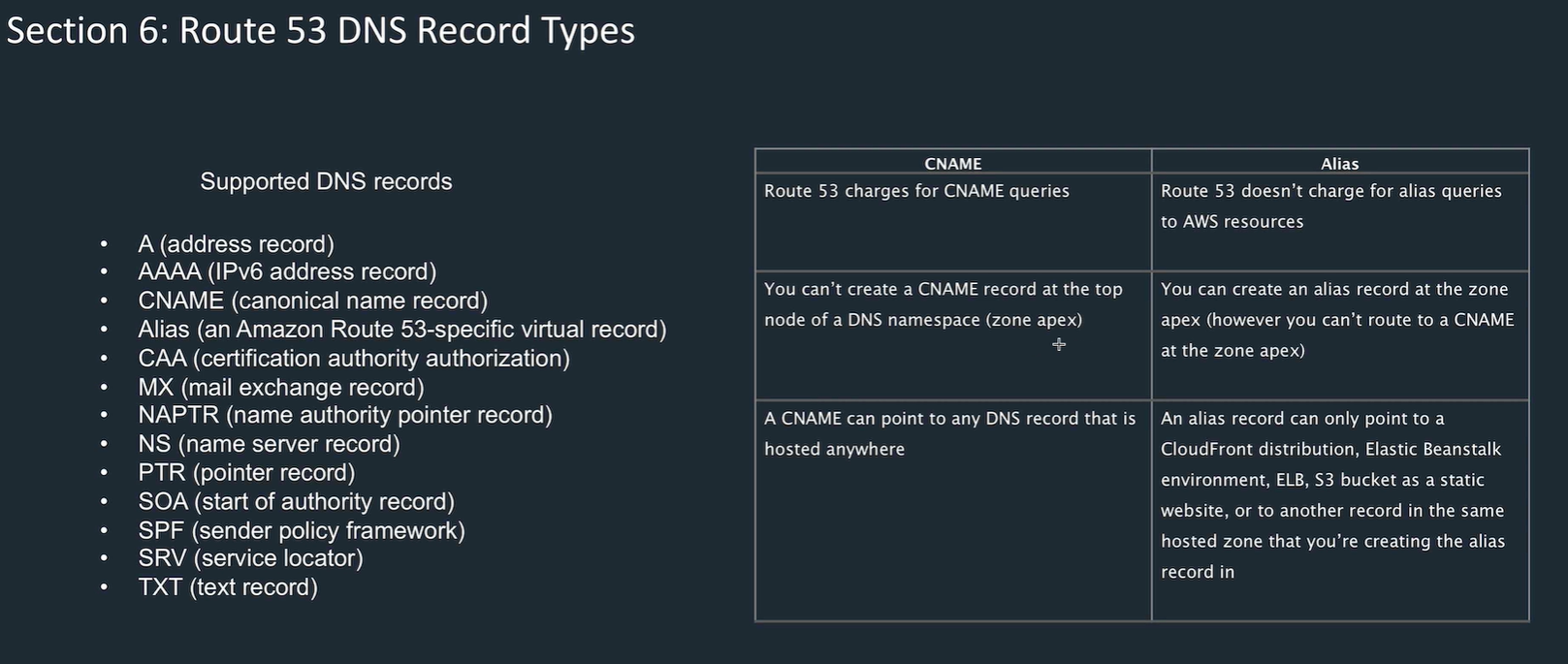
Routing policies
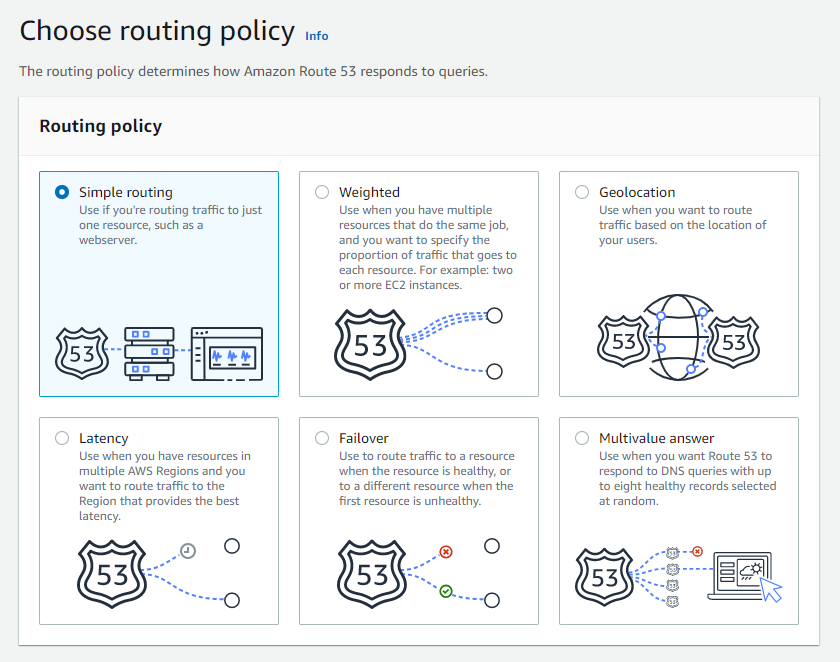
Use dig utility to see what your client thinks the DNS points to. Cached with a TTL.
Simple routing
- A record associated with one or more IP addresses
- Doesn't support health checks
- For routing a DNS name to one resource (but can have multiple IPs, round robin)
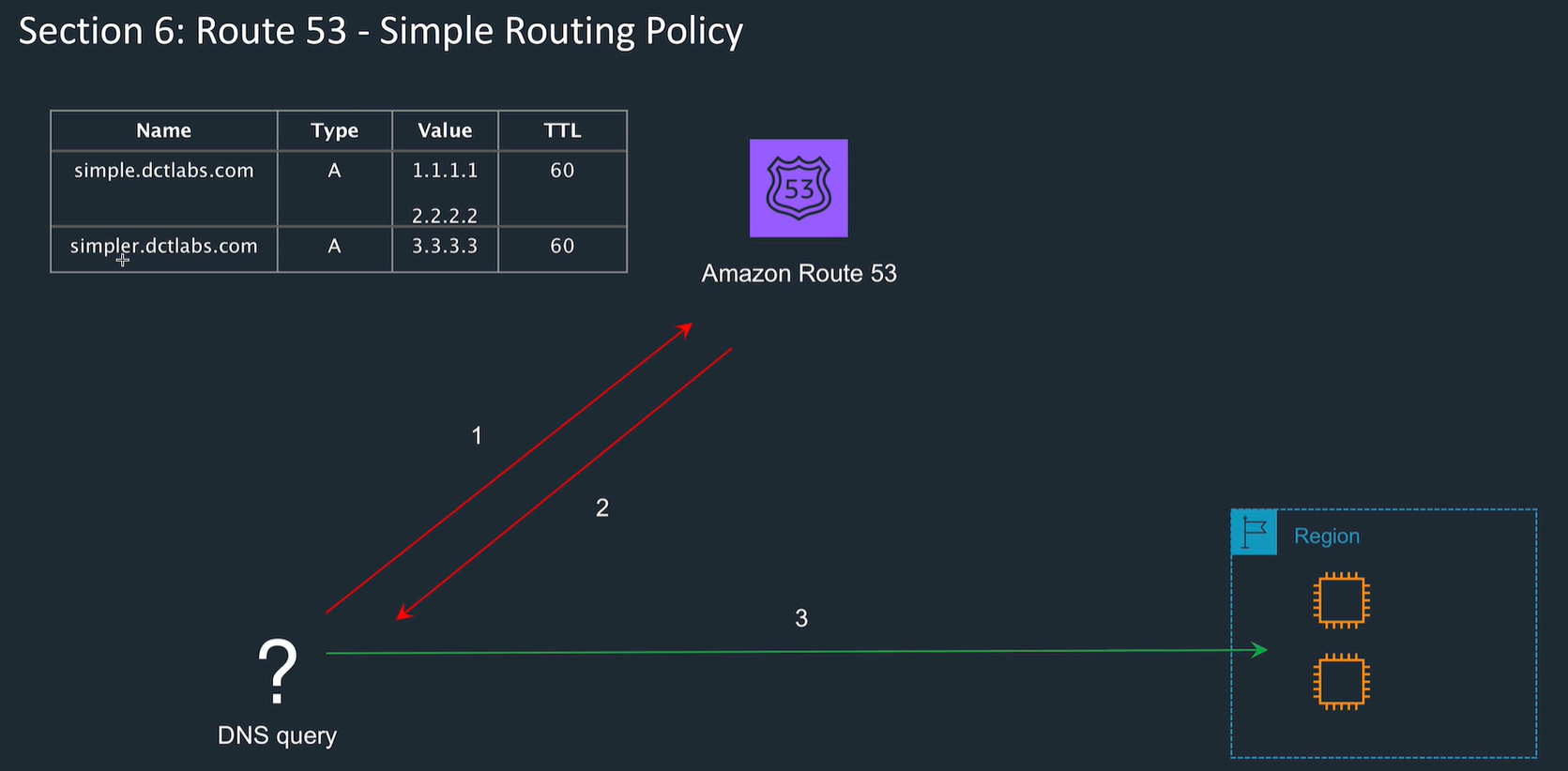
Weighted routing
Specify multiple destinations, and a weight for each. Different values provided depending on weight.
Can configure health checks
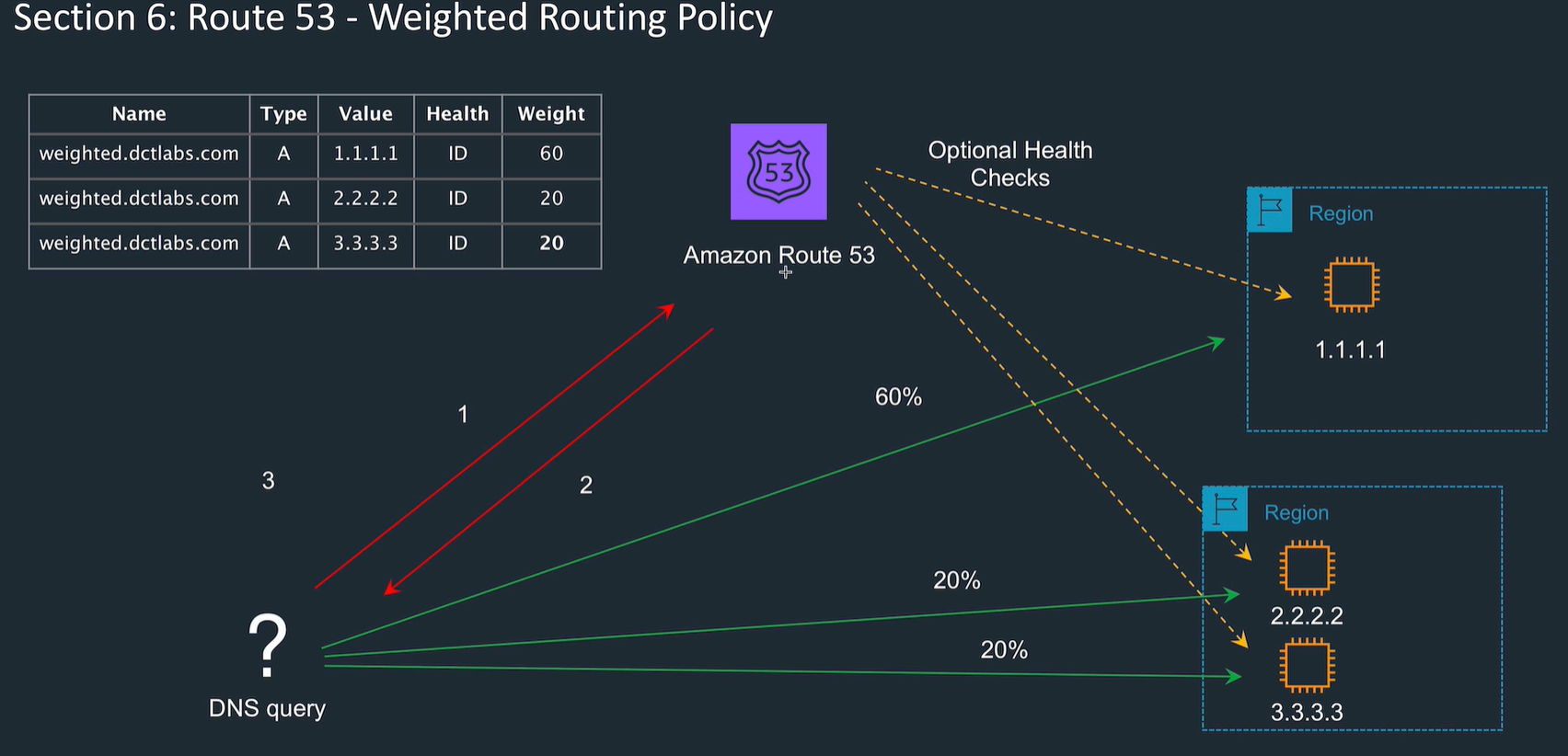
Latency based
- Users connected to service with lowest latency
- Distance is key
- create multiple records, Route 53 choses based on user latency
- use e.g. VPN to dummy location to test
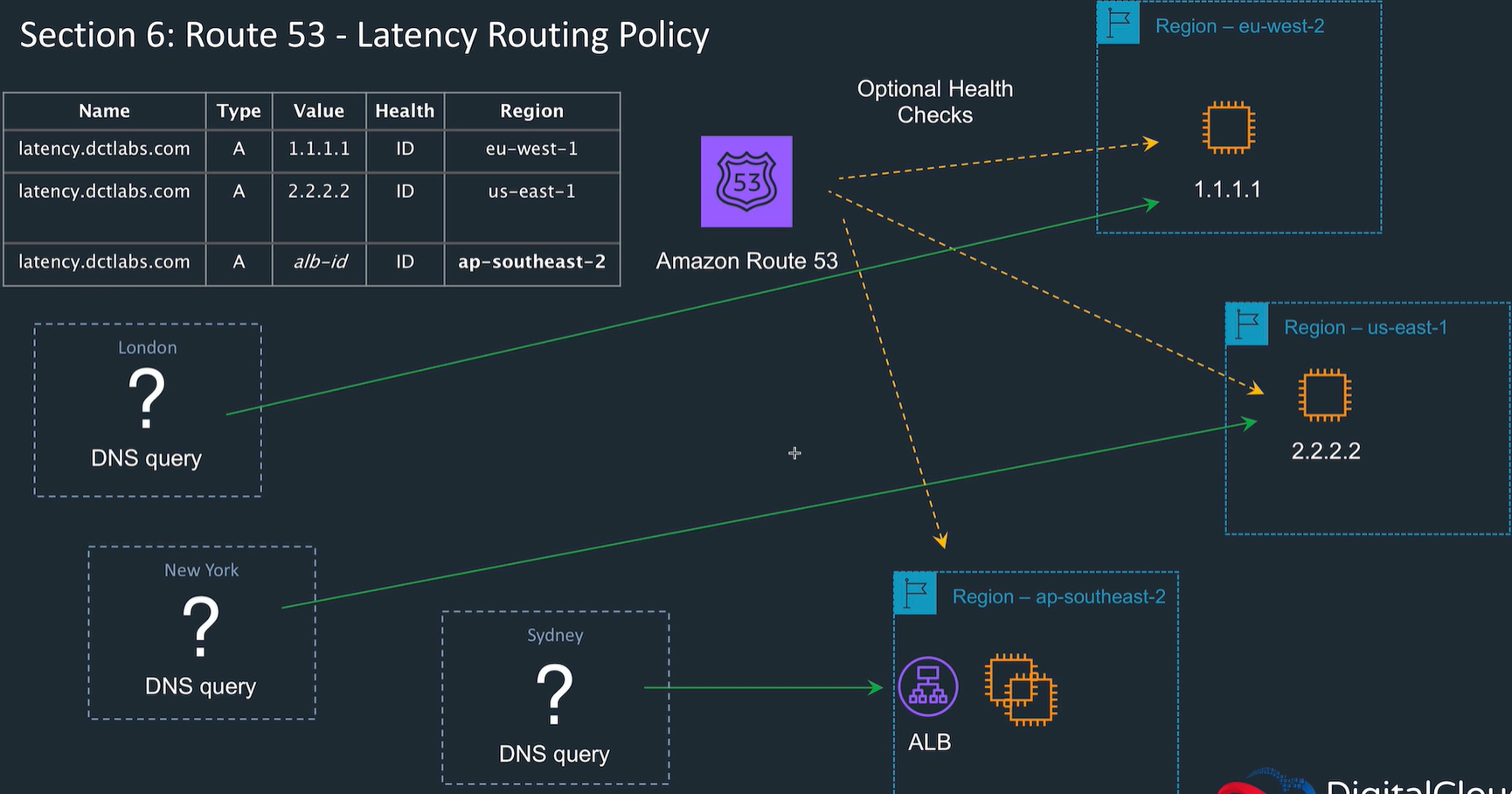
Failover Routing
- Primary and secondary target
- Use health check to test if primary is live, mandatory
- When fail, cuts over.
- Set TTL appropriately
Geolocation routing
- Lock to a location
- e.g. use different language web sites, distribution rights, etc.
- specify by continent, country, state in US.
- Multiple entries for a record type, set location.
- Set a default
- Can associate with health check
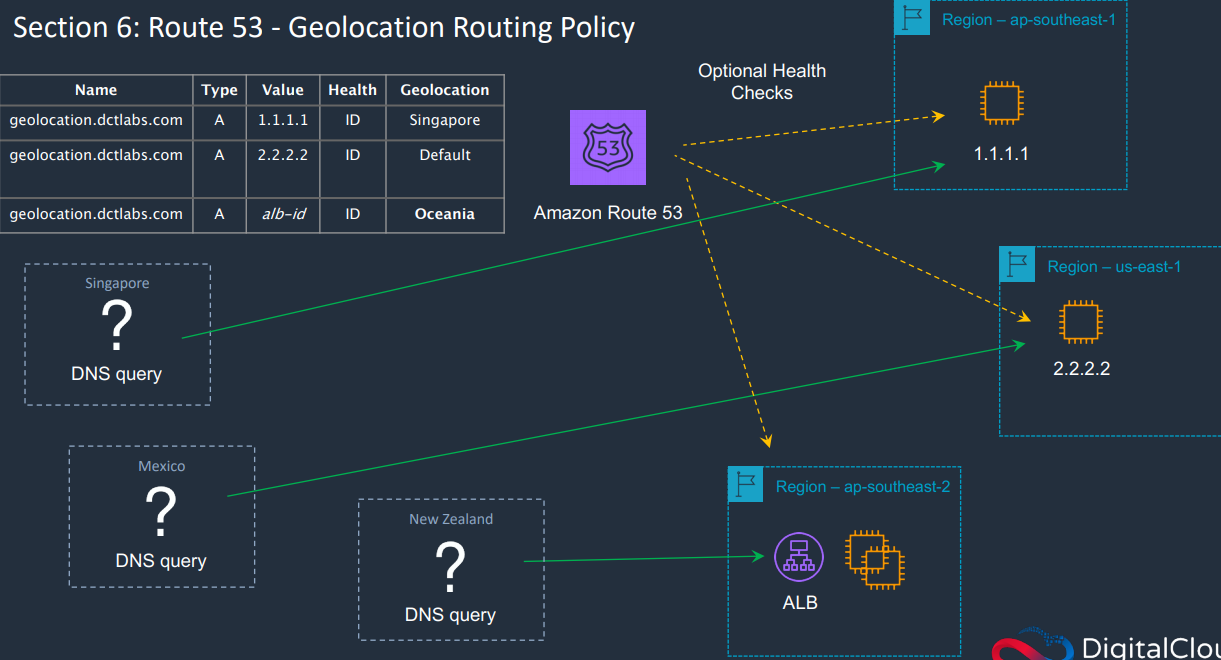
Multivalue routing policy
- Return multiple values (IP addresses) to the client. Then client can do load balancing on their side.
- Can give up to 8 records
- generally only gives healthy instances. If no health check, included anyway. If all unhealthy, all returned.
- bit like a load balancer
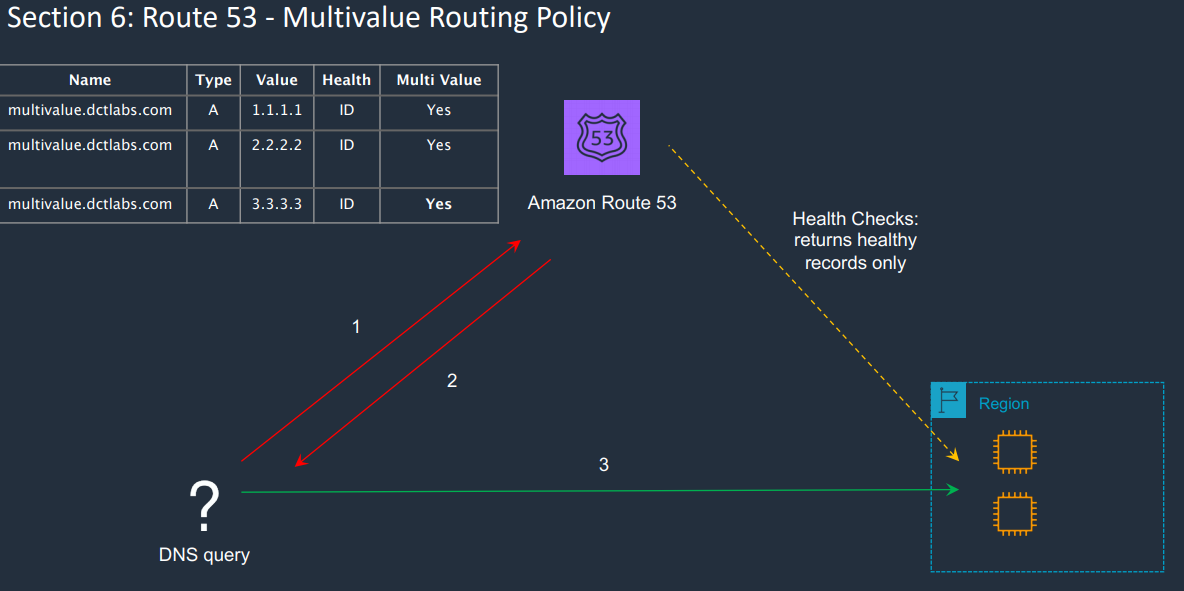
Traffic flow
- Enables you to create a policy which combines several policies.
- e.g. Primary & secondary, primary has weights, then weights use latency.
Route 53 Resolver
- regional service which can route DNS queries between VPCs and on prem.
- Aims to resolve across hybrid environments (On Prem plus AWS)
- in Route 53 create outbound endpoints and inbound endpoints
- e.g. use mail server on prem.
- all a bit complex.
AWS Global Accelerator
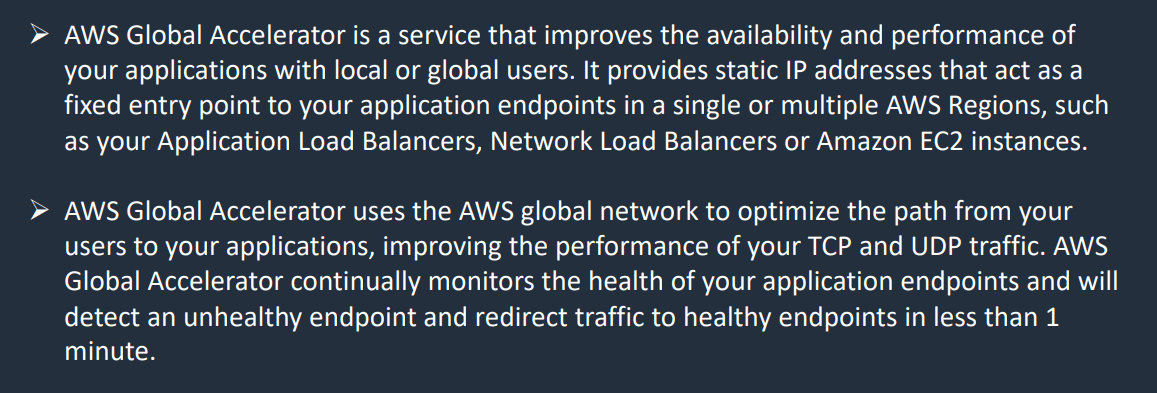
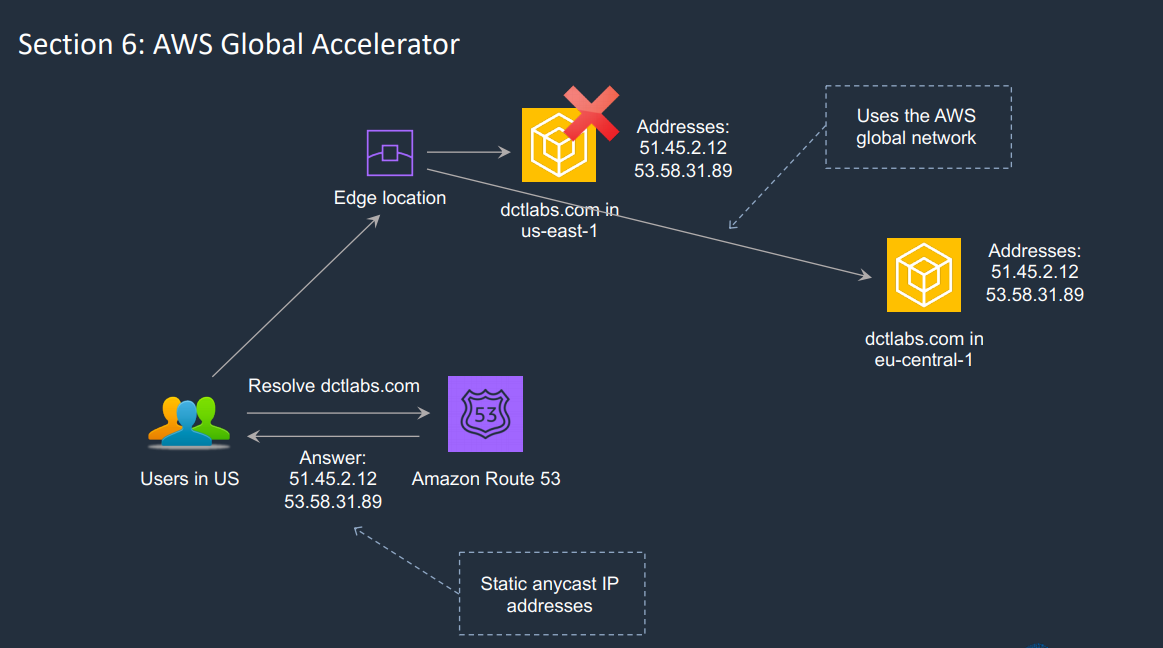
- Uses internal AWS network, not the internet
- Monitors health
- Gives static IP addresses for all sorts of regional load balancers etc.
- Don't need to change info at client end when a service goes down with TTL as this info never changes.
- Uses edge locations
- When a failure, AWS Global accelerator redirects the traffic.
- Useful when have static IP addresses and need failover
Pricing: fixed fee for each partial hour, plus per gigabyte charge.
- Set up endpoint groups (regions)
- Set up endpoints (e.g. ALB, EC2 etc)
- Can assign weights to each group and each instance
- Gives 2 static IP addresses
- Either one will direct a user to closest endpoint.









